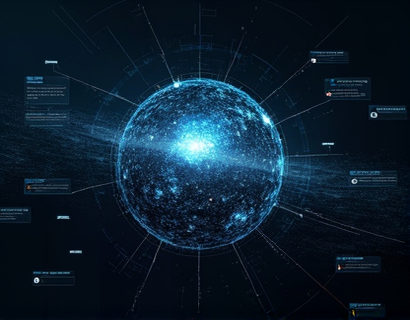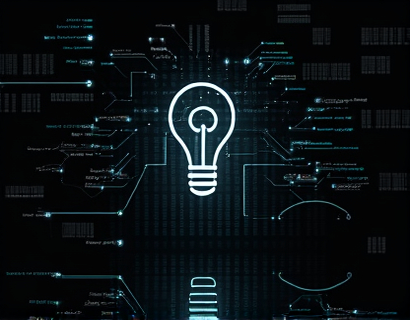Maximize Your Multi-Channel Announcements: A Strategic Guide for Businesses and Individuals
In today's fast-paced digital landscape, making effective announcements across multiple channels is crucial for businesses and individuals aiming to maximize their reach and engagement. This guide provides a comprehensive strategy to streamline your announcement process, ensuring your messages resonate with your audience across various platforms. Whether you're a business owner or an individual looking to enhance your communication strategy, this resource will offer valuable insights and actionable steps to optimize your multi-channel announcements.
Understanding Multi-Channel Communication
Multi-channel communication involves using multiple platforms to reach your audience, each with its unique characteristics and audience demographics. This approach allows you to connect with your audience where they are most active, increasing the likelihood of your message being seen and acted upon. The key to successful multi-channel communication lies in consistency, clarity, and strategic timing.
Identifying Your Audience and Channels
The first step in maximizing your multi-channel announcements is to understand your target audience and the channels they frequent. Conduct thorough research to identify where your audience spends most of their time online. This could include social media platforms like Facebook, Twitter, and Instagram, as well as industry-specific forums, blogs, and news sites. For businesses, understanding customer behavior and preferences is essential for tailoring your message and selecting the right channels.
Crafting Your Message
A well-crafted message is the cornerstone of effective multi-channel communication. Your announcement should be clear, concise, and compelling, tailored to the specific platform and audience. Consider the following elements when crafting your message:
- Purpose: Clearly state the reason for the announcement and what action you want the audience to take.
- Relevance: Ensure the message is relevant to your audience's interests and needs.
- Brevity: Keep your message short and to the point, avoiding unnecessary details.
- Tone: Adjust the tone to match the platform and audience, whether it's formal, friendly, or urgent.
Use a consistent brand voice across all channels to build recognition and trust. Personalization can also enhance engagement, so consider using audience data to customize messages where appropriate.
Choosing the Right Channels
Not all channels are suitable for every announcement. Select channels that align with your message and audience preferences. Here are some common channels to consider:
- Social Media: Ideal for real-time updates and engaging with a broad audience. Platforms like Facebook and Twitter are great for immediate announcements, while LinkedIn is better for professional updates.
- Email Newsletters: Effective for detailed information and building a direct line of communication with subscribers. Segment your email list to tailor content to different groups.
- Website and Blog: Use your website and blog for in-depth announcements and to drive traffic to other channels. Ensure your announcements are easily accessible and prominently featured.
- Industry-Specific Forums and Groups: Engage with your target audience in relevant online communities where they discuss industry topics.
- Press Releases: For significant announcements, a press release can reach a wider audience through media outlets and industry publications.
Evaluate the strengths and limitations of each channel to determine the best mix for your announcement strategy. For instance, social media is excellent for immediate engagement, while email newsletters provide a more personal touch.
Timing and Scheduling
Timing is crucial in multi-channel communication. Posting at the right time can significantly impact the visibility and engagement of your announcement. Consider the following tips:
First, analyze your audience's online behavior to identify peak activity times for each channel. Use analytics tools to gather data on when your audience is most active and engage with them during these periods.
Second, avoid overwhelming your audience with too many announcements at once. Space out your posts to maintain interest and prevent message fatigue. Use scheduling tools to plan and automate your posts, ensuring consistent timing across channels.
Lastly, be mindful of time zones if your audience is global. Adjust your posting times to accommodate different regions, ensuring your message reaches as many people as possible.
Visual Elements and Multimedia
Incorporating visual elements and multimedia can enhance the impact of your announcements. Images, videos, and infographics can make your message more engaging and memorable. Here’s how to effectively use these elements:
- Images: Use high-quality, relevant images that complement your text and capture attention.
- Videos: Short, informative videos can provide a dynamic way to convey your message, especially on platforms like YouTube and Instagram.
- Infographics: Visual data representations can simplify complex information and make your announcement more shareable.
Ensure that multimedia elements are optimized for each platform, considering file size and format requirements. This will help maintain fast loading times and prevent technical issues.
Monitoring and Analyzing Performance
To maximize the effectiveness of your multi-channel announcements, continuous monitoring and analysis are essential. Use analytics tools to track key metrics such as reach, engagement, click-through rates, and conversion rates. This data will help you understand which channels and messages resonate most with your audience.
Regularly review your performance reports to identify trends and areas for improvement. Adjust your strategy based on these insights, experimenting with different approaches to optimize results. For example, if a particular type of content performs well on one channel, consider creating more of it or testing it on other platforms.
Building a Consistent Brand Presence
Consistency is key in multi-channel communication. Maintain a consistent brand presence across all platforms by using the same logo, color scheme, and messaging style. This helps build recognition and trust among your audience.
Develop a brand style guide that outlines the usage of your brand assets and tone of voice. Train your team to adhere to this guide to ensure uniformity in all communications. Consistency also extends to the frequency and timing of your announcements, creating a predictable and reliable communication pattern.
Engaging with Your Audience
Multi-channel communication is not just about broadcasting messages; it's also about engaging with your audience. Respond promptly to comments, messages, and mentions to show that you value your audience's feedback. This interaction can foster a sense of community and loyalty.
Use polls, surveys, and Q&A sessions to gather input and insights from your audience. This not only increases engagement but also provides valuable data to refine your communication strategy. Be authentic and transparent in your interactions to build a strong relationship with your audience.
Leveraging User-Generated Content
User-generated content (UGC) can amplify your announcements and add credibility to your brand. Encourage your audience to share their experiences, photos, or testimonials related to your announcement. UGC can be shared across multiple channels, providing social proof and increasing engagement.
Create incentives to motivate your audience to generate content, such as contests, giveaways, or feature opportunities. When using UGC, always obtain permission and credit the contributors to maintain trust and respect.
Cross-Promotion and Integration
Maximize the reach of your announcements by integrating and cross-promoting across different channels. For example, include links to your social media posts in your email newsletters, and vice versa. This creates a seamless experience for your audience and drives traffic to each platform.
Utilize internal tools and platforms to streamline cross-promotion. If you have a content management system (CMS), use its built-in features to schedule and publish content across multiple channels simultaneously. This saves time and ensures consistency in messaging.
Staying Updated with Platform Changes
The digital landscape is constantly evolving, with platforms regularly updating their features and algorithms. Stay informed about these changes to adapt your strategy accordingly. Follow official blogs, join industry forums, and participate in webinars to stay ahead of the curve.
Be flexible and willing to experiment with new features and tools. For instance, the rise of short-form video content on platforms like TikTok and Instagram Reels presents new opportunities for engaging your audience. Stay open to trying new formats that can enhance your multi-channel announcements.
Conclusion
Maximizing your multi-channel announcements requires a strategic approach that considers your audience, message, channels, timing, and performance. By following the guidelines outlined in this guide, businesses and individuals can streamline their communication efforts, enhance message visibility, and foster stronger connections with their audience. Embrace the power of multi-channel communication to achieve your goals and stand out in a crowded digital space.










































